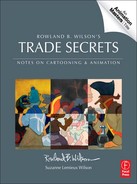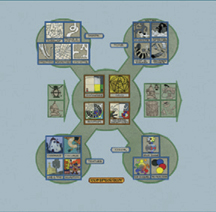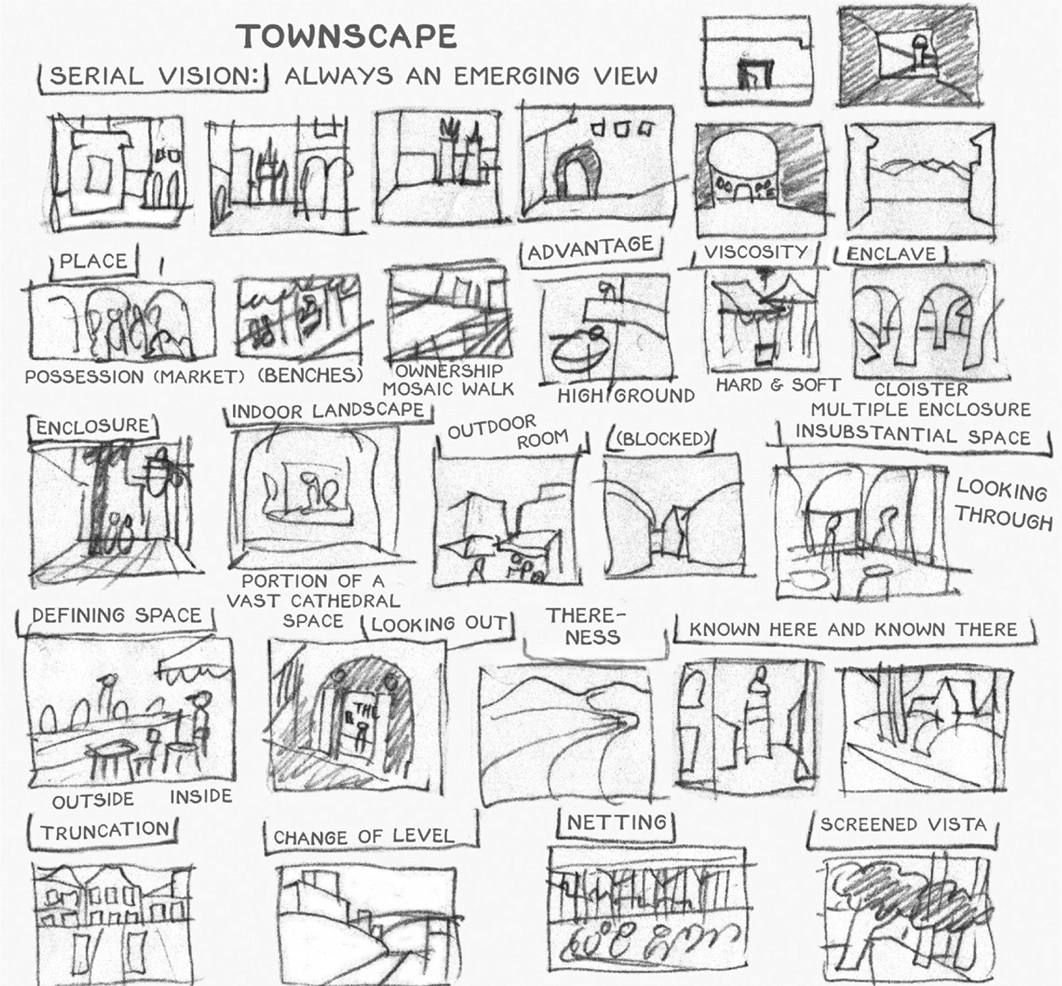THUMBNAIL STUDIES OF COMPOSITIONS BY VARIOUS ARTISTS
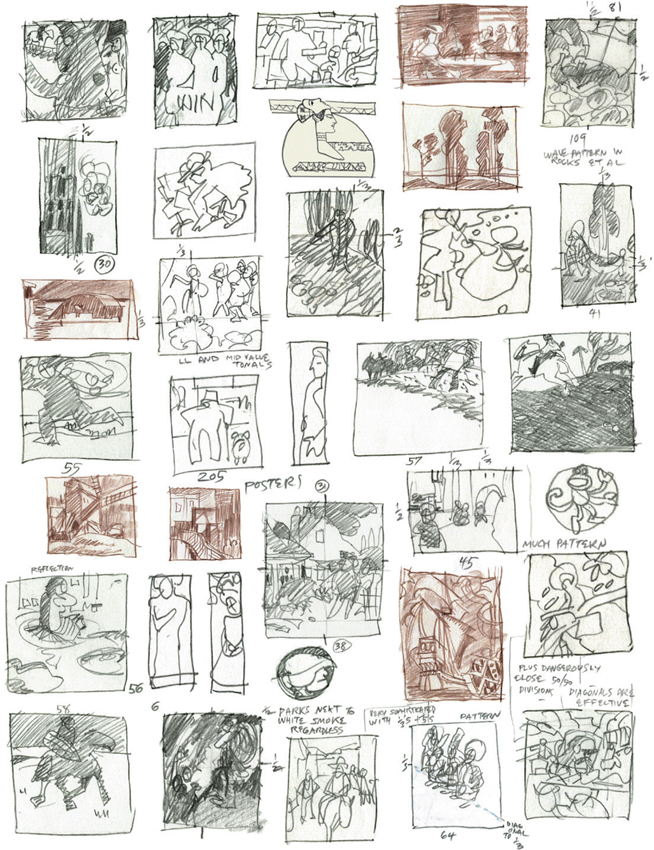
COMPOSITION OBJECTIVES
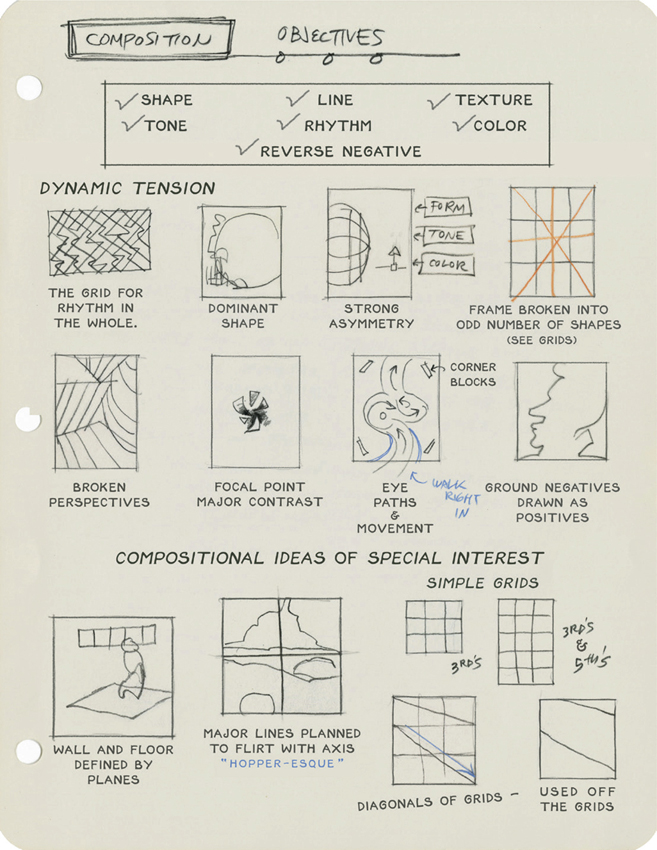
TYPES OF COMPOSITION

DOMINANCE IN COMPOSITION
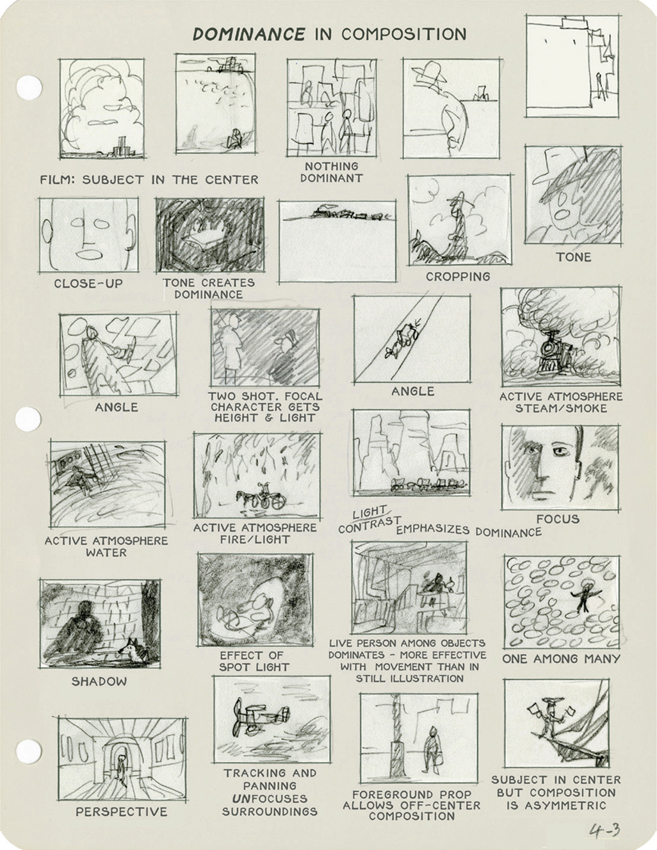
COMPOSITIONAL TENSION
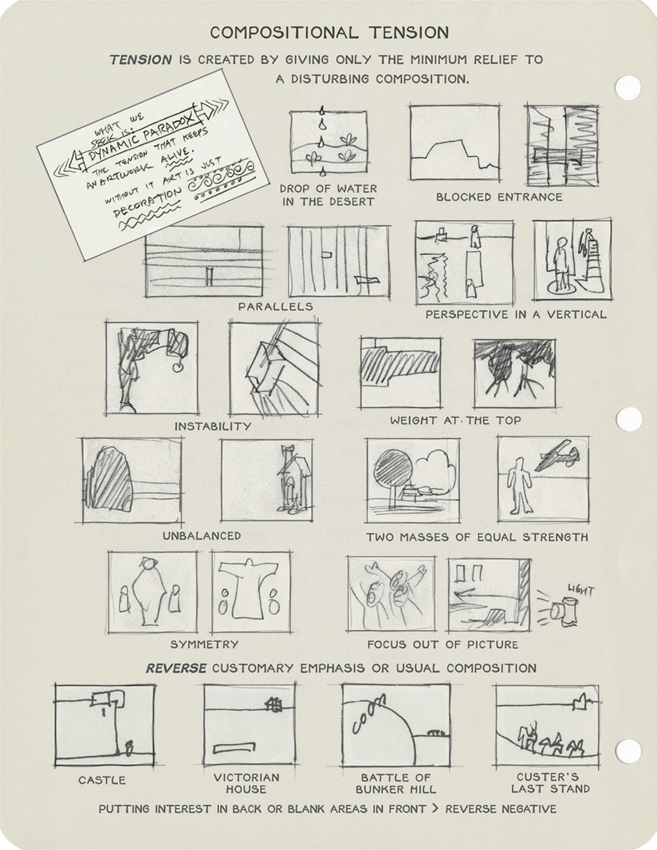
COMPOSITION FOR PSYCHOLOGICAL EFFECT

MOVEMENT, ORGANIZATION AND NOTAN

PICTORIAL COMPOSITION NOTES

EXAMPLES OF COMPOSITIONAL METHODS…

…BASED ON THE TEACHINGS OF EDGAR PAYNE

BREADTH AND DETAIL (RESOLUTION)
There are just two kinds of designs that are hard to do: the complicated designs and the simple designs. Everything else is easy.
SUGGESTION—In producing the effect rather than the detail (deductive fact) we substitute suggestion for literalism:
• Telling details make a connection from one to another.
• Hide and seek—Lost and found.
• The action in anticipation or follow-through.
• Gathering and aftermath.
MYSTERY—
• Daylight to twilight.
• Provide an opportunity for the exercise of the viewer’s own imagination.
• Some part unseen.
• The cottage at twilight vs. the cottage at 3 p.m.
SIMPLICITY—We are attracted not by the artist’s technique or problems but by his mental attitude. The result by elimination of what can be sacrificed lends respect to the artist, as opposed to doing the easy.
• Principality is the first step toward simplicity. Focus.
• One object, one quality, one light dominant.
DECORATION—Elegant but obvious arresting detail sacrificed to The Plan.
RESERVE—“I came. I saw. I conquered.” All that need be told is given strength by what is left unsaid.
• Expression through limitation.
• The avoidance of “overacting.”
• The rifle vs. the blunderbuss.
RELIEF—Particular items should not stand out so much as to jump off the canvas:
• Shadows flattened—rendering marked roundness of figures not so pronounced.
• Painting should express the envelopment of air.
• Outstanding figures in “limbo” are entities, not compositions.
FINISH—Not putting everything in, a matter of selection.
• Finish is the true relationship of values of shade and color. When these are properly adjusted the picture is finished.
THE “OAK” FORMULA FOR DYNAMIC PICTURE-MAKING
Close cropping means more, not less, white space.
“OAK” is an acronym for Overlap, Angle, and “K”rop. (Crop, as in cutting off part of a picture.) It is a way to create action and space in your layout. Overlapping emphasizes and defines scale. Angle gives variety of viewpoint. Cropping draws the viewer closer into the scene and can create mystery by obscuring parts of it.
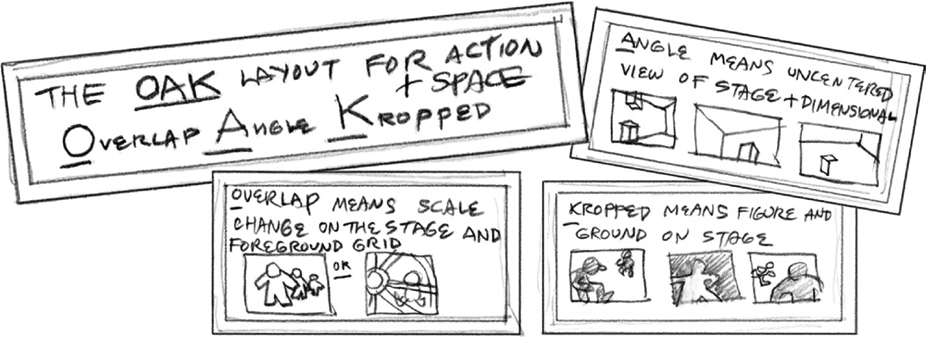
BLICK
“Blick” is defined as a look or glance. In film, illustration, comics and graphic novels it can be a frame that enhances action, speed and atmosphere—a fast glimpse into the story.
A blick is:
• Incomplete in itself.
• A part of a series or a single fragment.
• A clue to the content and meaning of the series.
• A scrap of information that contributes to milieu.
• It is secondary to the story line not primary.

Examples of Blicks
Most common use: Montage
Railroads, towns—to suggest a tour. Shows space and time.
Calendar Pages—to show the passage of time.
Battle shots—to suggest fighting and travail.
Used effectively in film by Orson Welles, Alfred Hitchcock, Stanley Donen.
It must show up in thrillers a lot—
The eyes in the portrait; the silhouetted figure watching.
It is meaningless out of context.


People remember blicks more than anything in the pictures because they have to solve the clue. They have to put two and two together. They are engaged in a dialogue with the story!
A blick expands the storyline by expressing the milieu of the piece.
• It may express a system within a system of character:
• A mood or psychological state.
• Paranoia, shock, fear, joy, hunger.
• Sleepiness, acrophobia, agoraphobia, claustrophobia.
• Or a system within a system of milieu—
• Corruption, tyranny, laissez-faire, holiday spirit, celebration or workaday life.
• Or a system within a system outside the system of character—
• Time, weather, rain and atmosphere; or the business of the noninvolved… bystanders, observers, the self-involved, animals and birds.
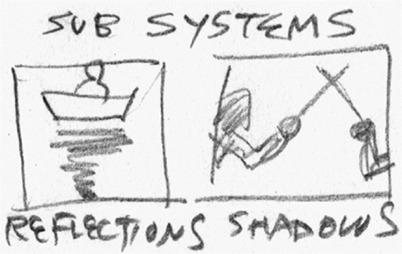
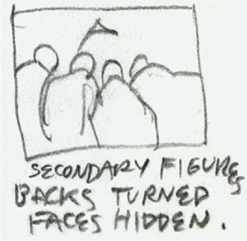
The Style of a Blick
It is that of a glance, a snapshot, a telltale clue or detail. It may be a cropped view partially obscured.
It may be shot through a grid or some other foreground.
It resembles an in-between in animation—anticipation or a follow-through. It is not a key or contact drawing. It is a gathering or aftermath. It partakes of shadows, reflections and silhouettes.

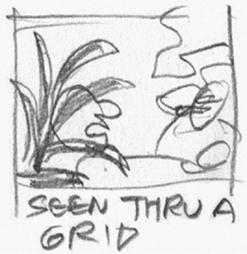
The Composition of a Blick
It has instability. It is unbalanced and uncentered. It has maximum tension and only minimum relief of a disturbing imbalance. It contrasts to storyline pictures.

Blick as Related to Townscape
Townscape, a book by Gordon Cullen, presents many ideas regarding existing towns and cities that can be applied to fictitious ones you create for your film or story.
He emphasizes the importance of relationship—how a huge building seems to tower over a tiny one as opposed to being viewed among those of similar size. “Serial Vision” evokes the feeling of moving through a variety of spaces, as from path to street to courtyard. Each turning reveals a new vista as one proceeds from existing view to emerging view. “Place” is the emotional nature of your environment—being elevated or low, constricted or limitless, enclosed or outdoors. “Content” includes style and meaning—the ambiance and unique character of the location.
SKETCHES OF BLICK COMPOSITION FROM FILMS
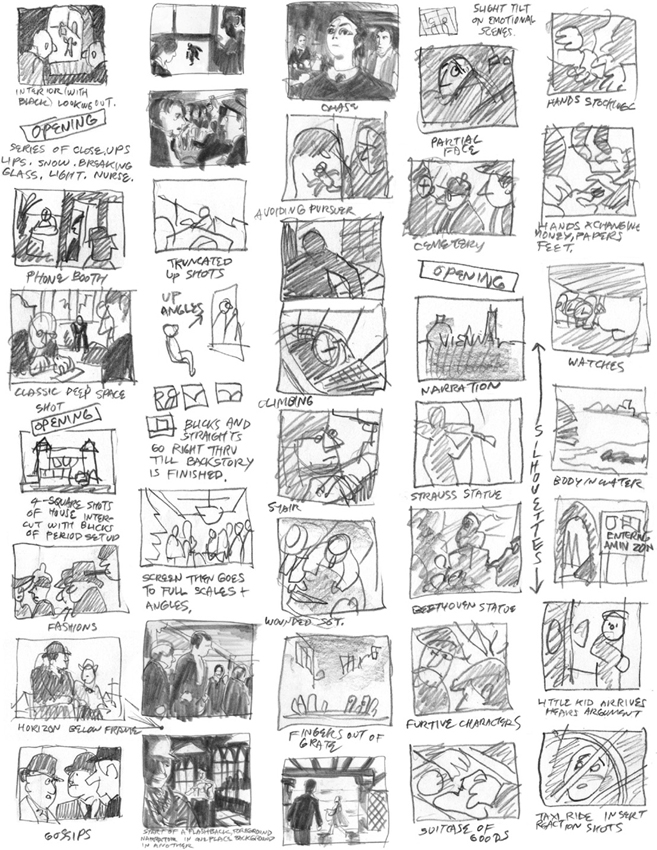
SUMMARY OF BLICK DESIGN


